Note: This is a popular folktale told and retold in Sikkim and the surrounding hills of Darjeeling and Kalimpong where Lepcha people live. It is also popular with people of other communities for the undisputable beauty and importance of these two iconic rivers. This is my version of the story drawing upon memories and also having read a recent version in "Legends of the Lepchas: Folktales from Sikkim" by Yishey Doma.
According to a Lepcha folktale, Rangeet and Rongnyu—the two iconic rivers in Sikkim— are the beautiful creations of Mother Goddess Itbu-moo. They were known in Mayel Lyang1 for their graceful beauty and love for one another. Rongeet in Lepcha means ‘from where the Rongs2 originate,’ and Rongnyu is ‘a respected Rong lady’.
The two river spirits used to meet secretly. When their love came to light, they offered prayers to Kongchen Kongchlo (Mt Khangchendzonga) and chose to leave their homeland and travel to a far-off land. The river spirits decided to take different routes, promising to meet at Pozok (now known as Peshok, near Darjeeling, located above the confluence of Rangeet and Teesta). They challenged each other to a race down to the faraway plains.
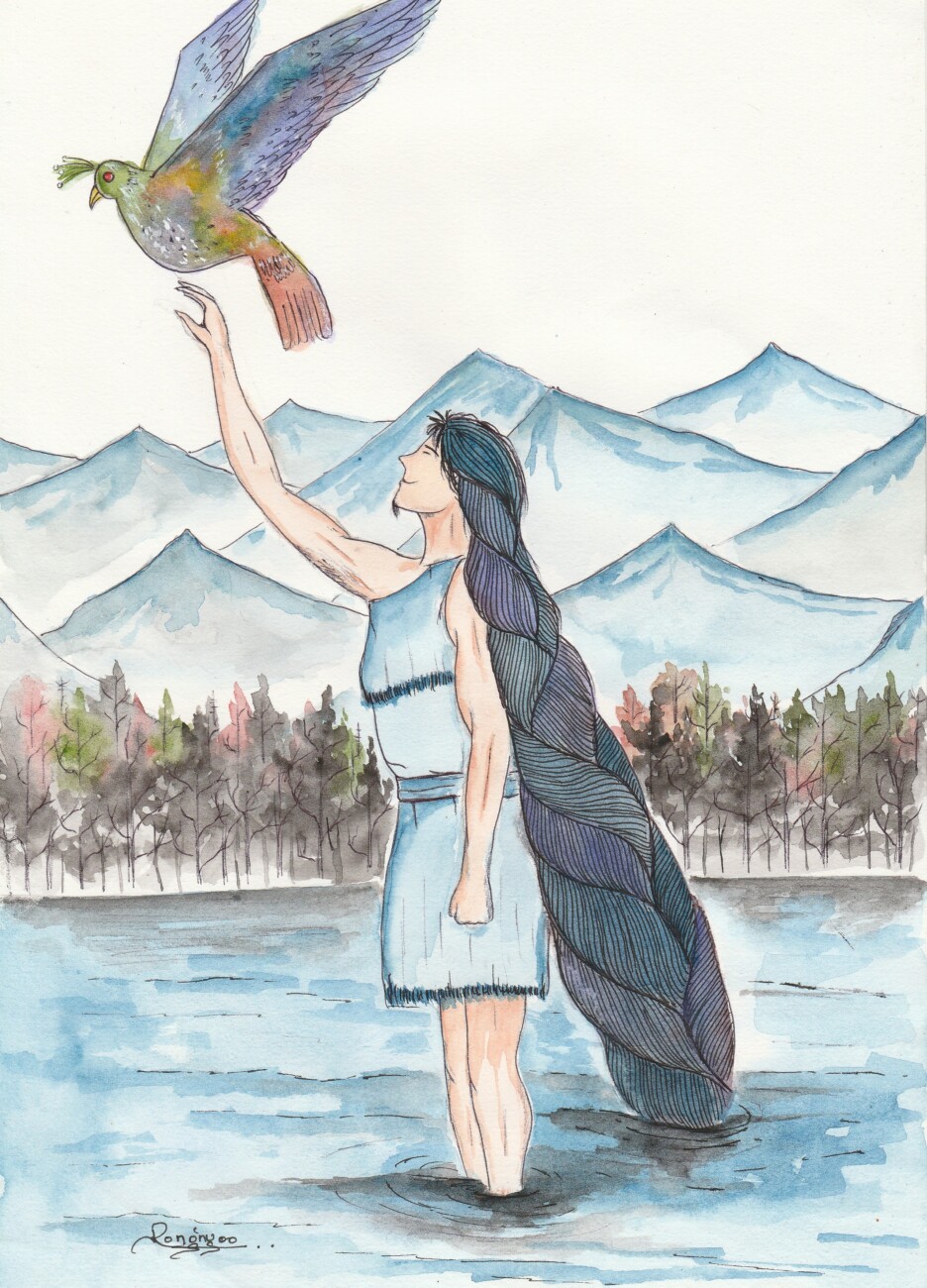
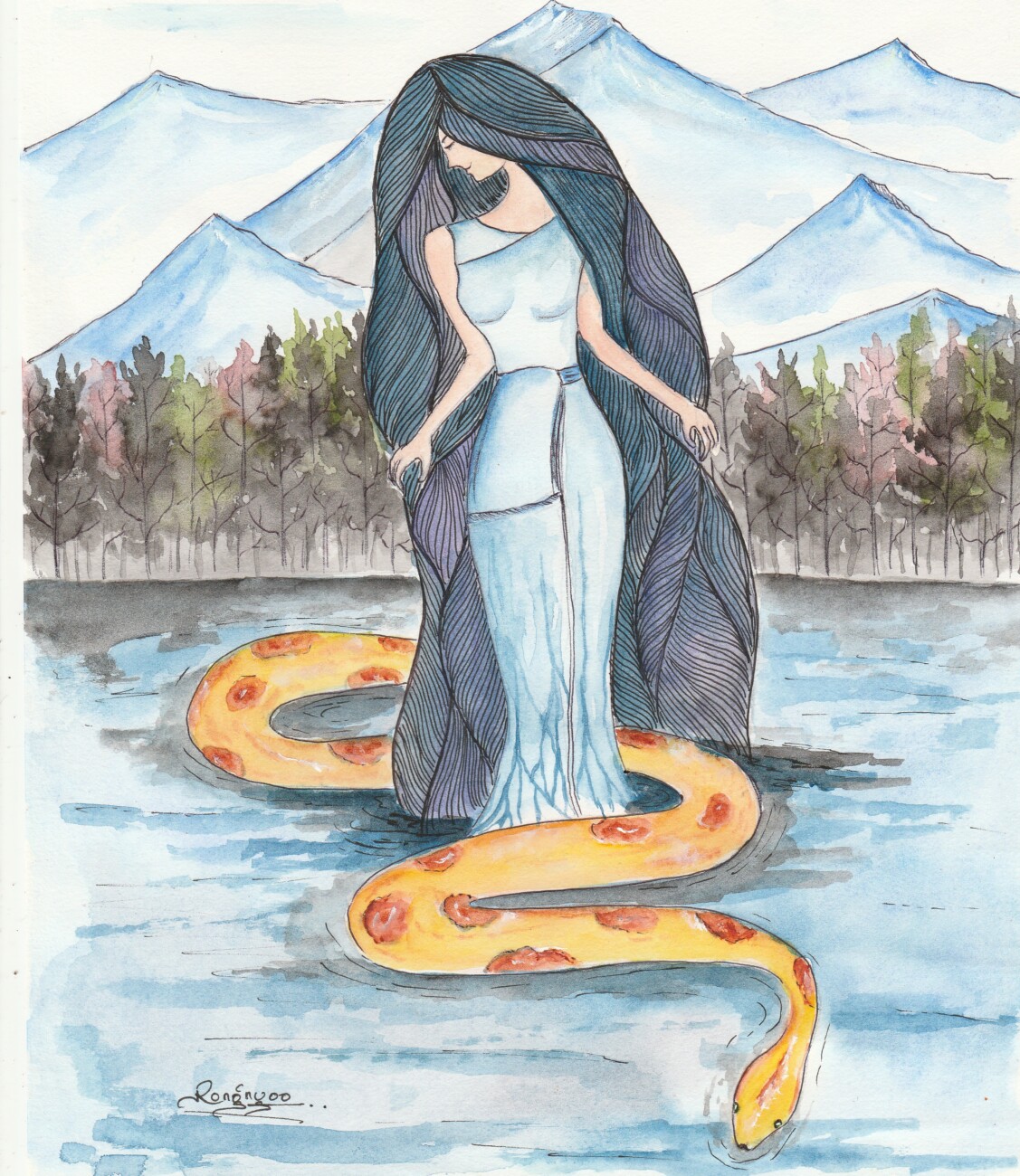
Since the two spirits did not know their way in the unfamliaar terrain, they chose different guides to show them the way. Rangeet chose Tutfo, the mountain bird known for its swiftness in flight, for a guide and Rongnyu asked Parilbu, the snake, to guide her.
To Rangeet’s dismay, he found that though Tutfo was swift, but he was easily distracted by fruit-laden trees, brightly-coloured flowers or unusual insects found along the way. Tutfu would often set off to play with other birds or take rest to peck on some fruit. Tutfo continued to be negligent and behaved this way in spite of Rangeet’s consistent reminders about the race.
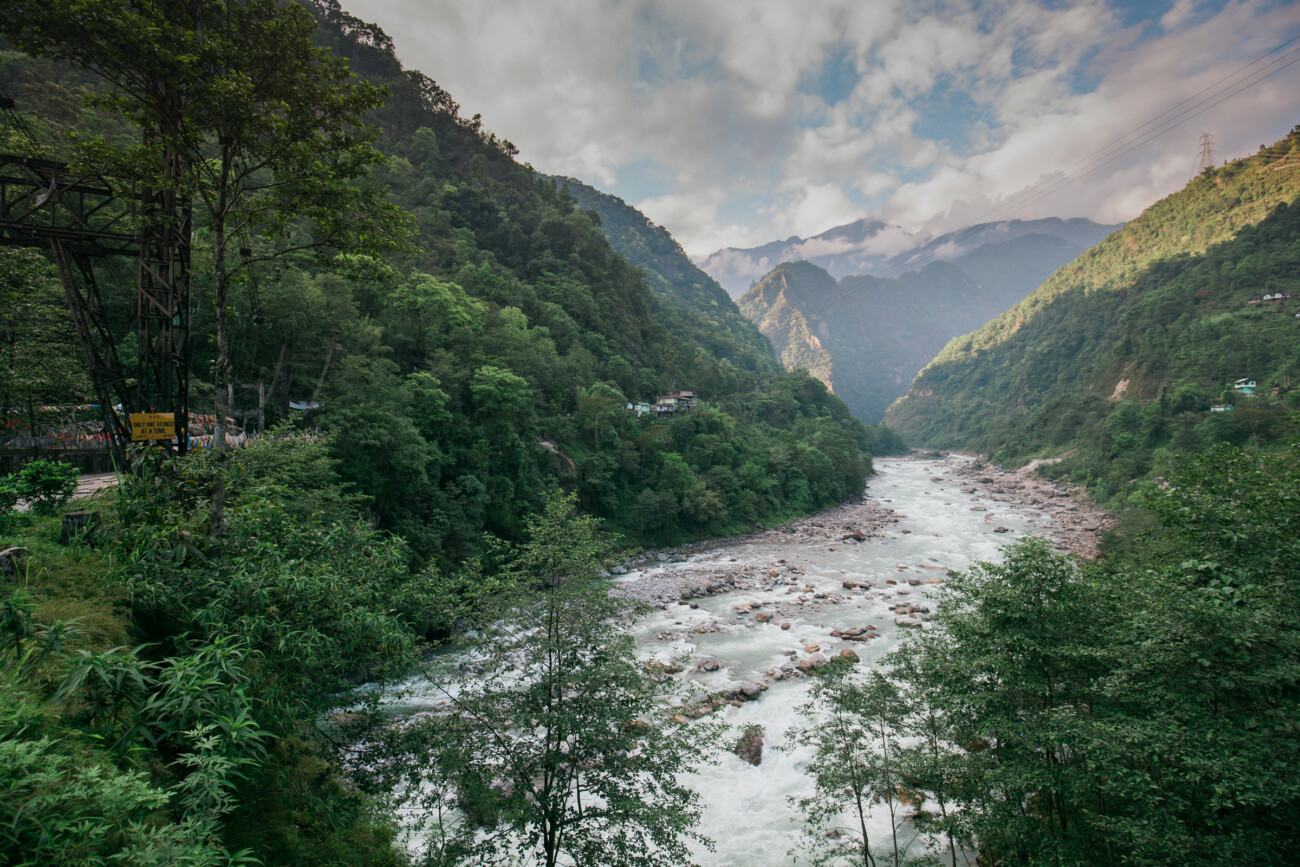
Parilbu, on the other hand, while slower than Tutfo, continued towards its destination without distraction. Soon the finish line was within Rongnyu’s sight and she was delighted that she’d won the race. But her happiness was short-lived as the wait for her beloved Rangeet grew longer and longer.
After what seemed like an eternity, Rangeet finally arrived in and saw that Rongnyu was already waiting for him on the plains below. “This-see-tha (When did you arrive)?” he exclaimed in utter shock and disbelief at having lost the race. His pride was deeply wounded.
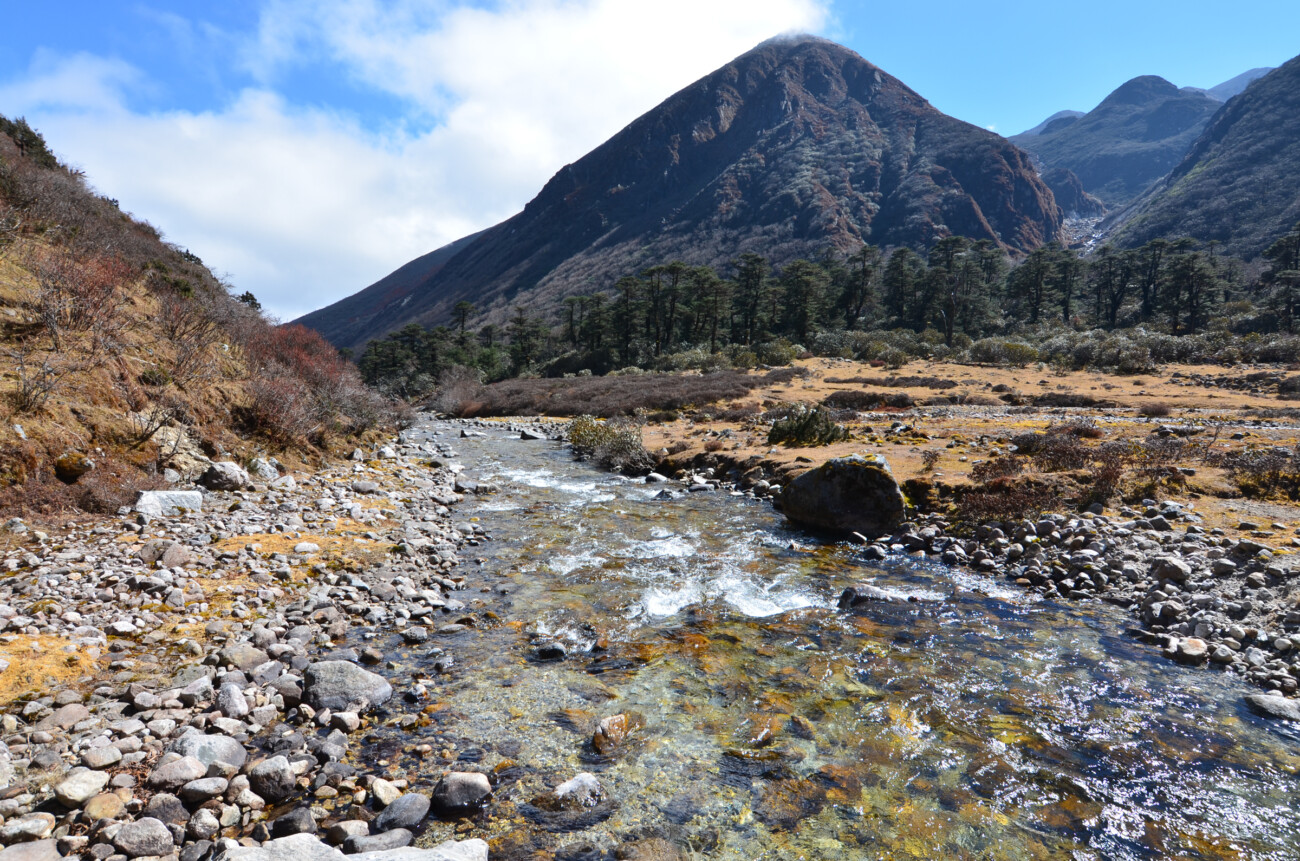
Enraged, Rangeet turned around towards the Himalayas without a thought. Roaring and moaning, Rangeet began causing untold destruction everywhere as he flowed back home with such unprecedented intensity. A heart-broken Rongnyu followed her lover but failed to console him. As the two river spirits moved upwards with increasing force, Mayel Lyang was submerged under deep waters.
People living in the valley thought that the great deluge was caused by Itbu-moo, the Mother Creator, whom they had forgotten to worship. All living creatures from humans to animals, birds and insects began scrambling to higher mountains, crying for help. But all the hills were immersed in water except for Tundong Hlo or Tendong, a mountain near Damthang in South Sikkim. The mountain miraculously began to rise higher and higher in order to prevent the creatures clinging to its sides from drowning. Witnessing the utter havoc created by the deluge, the Lepchas began propitiating Itbu-moo’s wrath with prayers. “Please forgive us for causing you unhappiness and protect us from this destruction Itbu-moo,” cried the hapless victims.
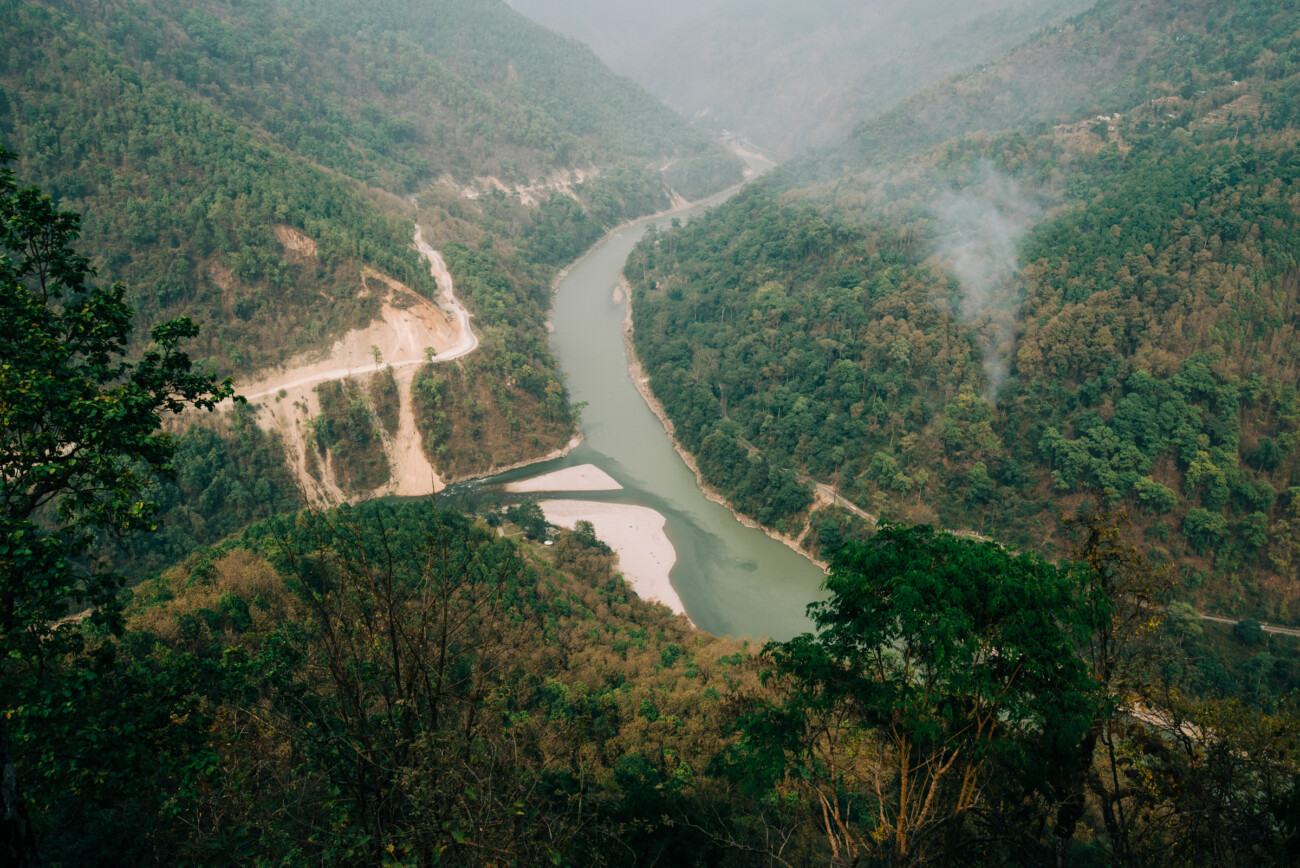
At long last, Kahomfo (partridge) descended on the peak of Tendong Lho and made an offering of mongbree (a kind of millet) to Kongchen Kongchlo. On behalf of the earthly creatures, Kahomfo hurled the grains towards the sky, asking for mercy. Hearing the bird’s pleas, Itbu-moo relented and the deluge caused by Rangeet and Rongnyu began to recede.
Moved by the story of Rangeet and Rongnyu, the Lepchas all headed to the confluence of the two rivers to make offerings to the river spirits. To this day, Lepcha brides and bridegrooms are taken to the rivers to wish them a happy and prosperous life, like that of the two river spirits.
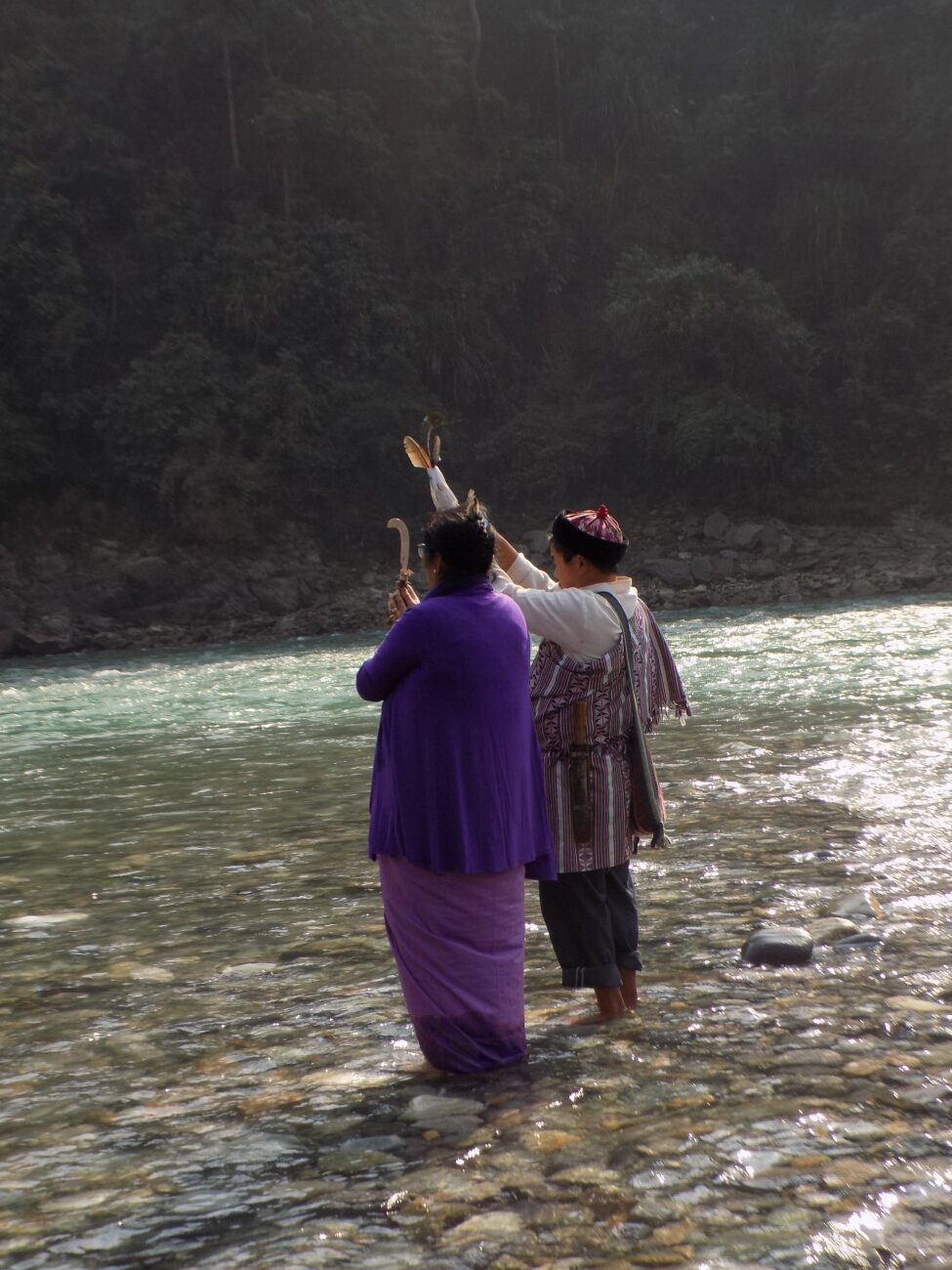
All the creatures were able to descend from Tendong Lho and pick up their lives again. They made sure to revere Tundong Lho, which saved so many lives in the hour of need. This is why the hill is considered to be holy by the Lepchas and once a year, they offer prayers and gifts here. This festival is called Tundong Lho Ruum Faat.
Rongnyu pleaded with Rangeet saying not to be angry any lomger. Rangeet heard his lover’s sweet comforting voice and asked for forgiveness for his thoughtless actions, and promised he would never leave Rongnyu's side. Touched by their love for each other, Itbu-moo accepted their relationship and blessed the couple saying people would remember and revere their love for generations to come. With this, together they flowed down the plains of Bengal, never to be parted again. Later, Rongnyu came to be known as Thi-see-tha, or Teesta.
Moved by the story of Rangeet and Rongnyu, the Lepchas all headed to the confluence of the two rivers to make offerings to the river spirits. To this day, Lepcha brides and bridegrooms are taken to the rivers to wish them a happy and prosperous life, like that of the two river spirits.
- Mayel Lyang is translated as ‘hidden paradise’ and is the home of the Lepchas
- The Lepcha call themselves Rongkup meaning the ‘children of Rong (god)’.
5 comments on “THE STORY OF TEESTA AND RANGIT”
Leave a Reply
Latest Posts
Latest Comments
No 'Comments_Widget_Plus_Widget' widget registered in this installation.


our lepcha sir told this story to me. I was really astonished that time, how lepcha people are down to earth, and how they related to rivers, mountains and trees. Hope this story keeps continue and never forget by people.
Such a beautiful love story between the spirits.
But I also hard that there is a river which flows silently, no sound and carrying a message. which is related above this story passing/sending the messages to their love. Is it true la madam?
The writer of this article could have given some kind of credit to 'Legends of the Lepchas': Folktales from Sikkim', where the story has been published.
-Yishey Doma, the author of the book.
What a lovely story of river spirits and yet so full of the folly of the male ego and of female need to appease that ego ! Very timeless and modern in that sense.
Really moved by the ancient fact and well description of Teesta.